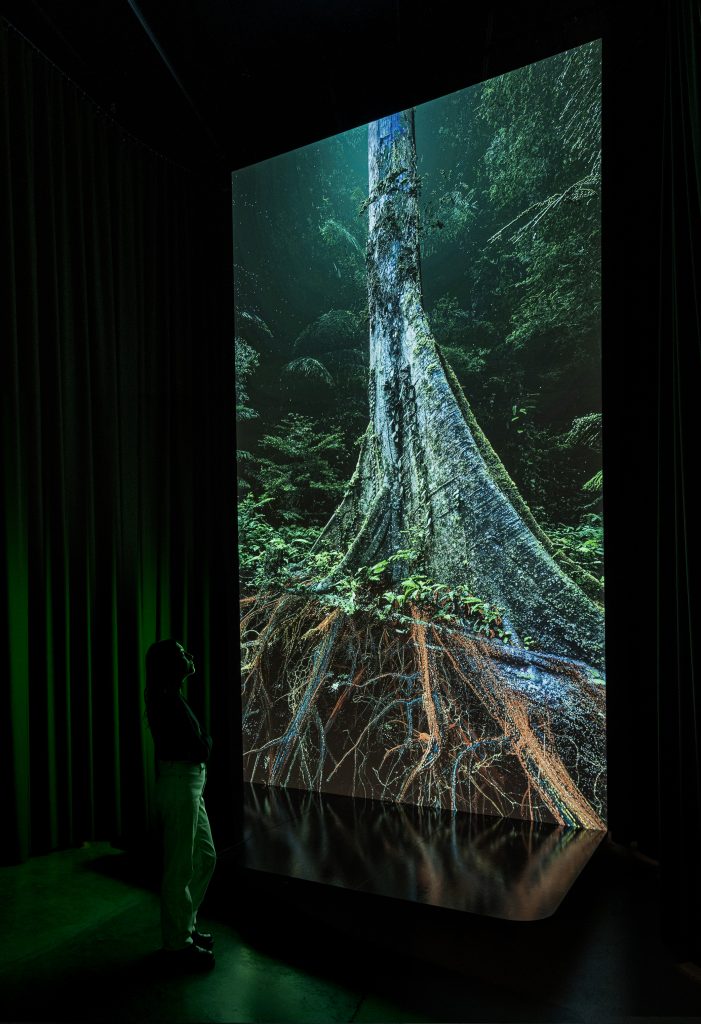
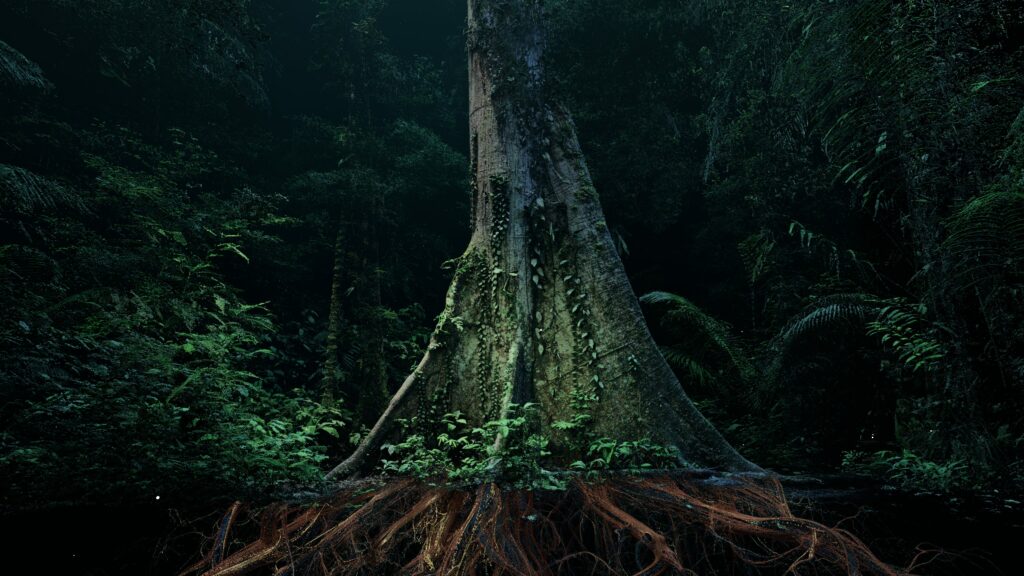
Sanctuary of the Unseen Forest
Sanctuary of the Unseen Forest is a large-scale video installation that creates a moment of awe, felt, when we embrace the presence of a majestic being, a giant Ceiba pentandra from the Colombian Amazon. The artwork becomes a sanctuary, a place to reflect and contemplate our place within the wider systems of nature.

(4°02'06.8 "S 70°04'44.1 "W)

Sanctuary of the Unseen Forest is a large-scale video installation that creates a moment of awe, felt when we embrace the presence of a majestic being, a giant Ceiba Pentandra from the Colombian Amazon. The artwork promotes radical thinking on a new ecology in the age of the Anthropocene.
The project offers a shift to our daily perception; “as the victims of plant blindness, we are simply unable to notice plant kingdom’s liveliness, they are so different from us that we have to invent new ways of seeing and apprehending them”.
Enquire about presenting this artwork
Sanctuary of the Unseen Forest is available as Edition at bitforms gallery
Outcrop, 180 Strand, 2023
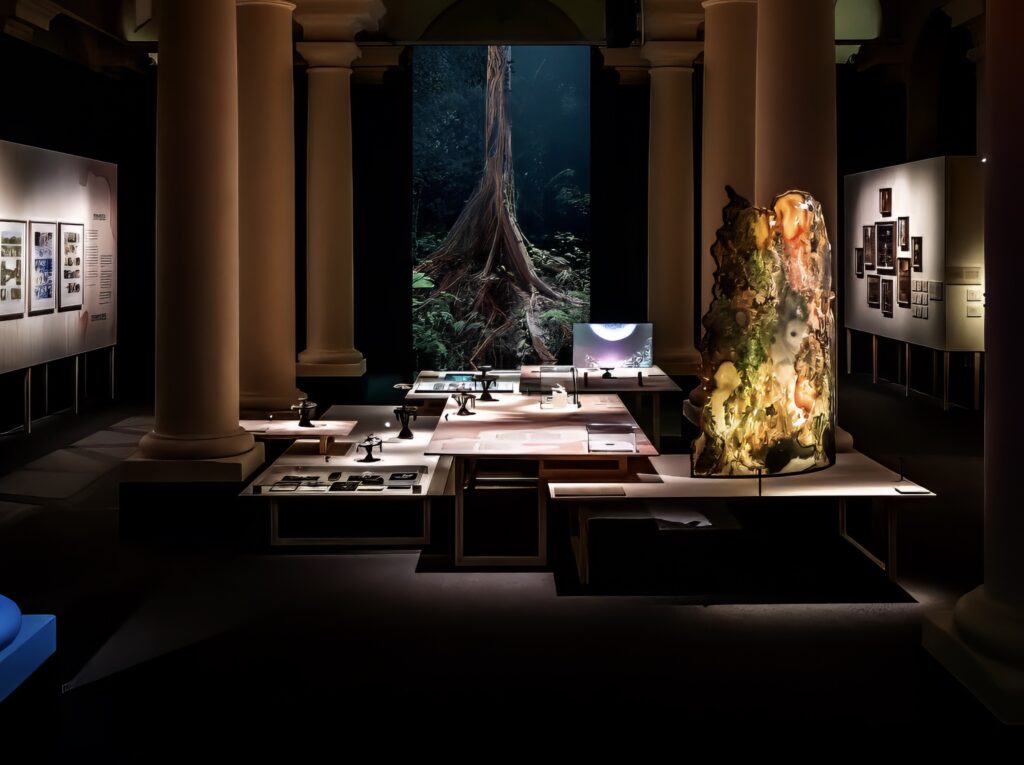
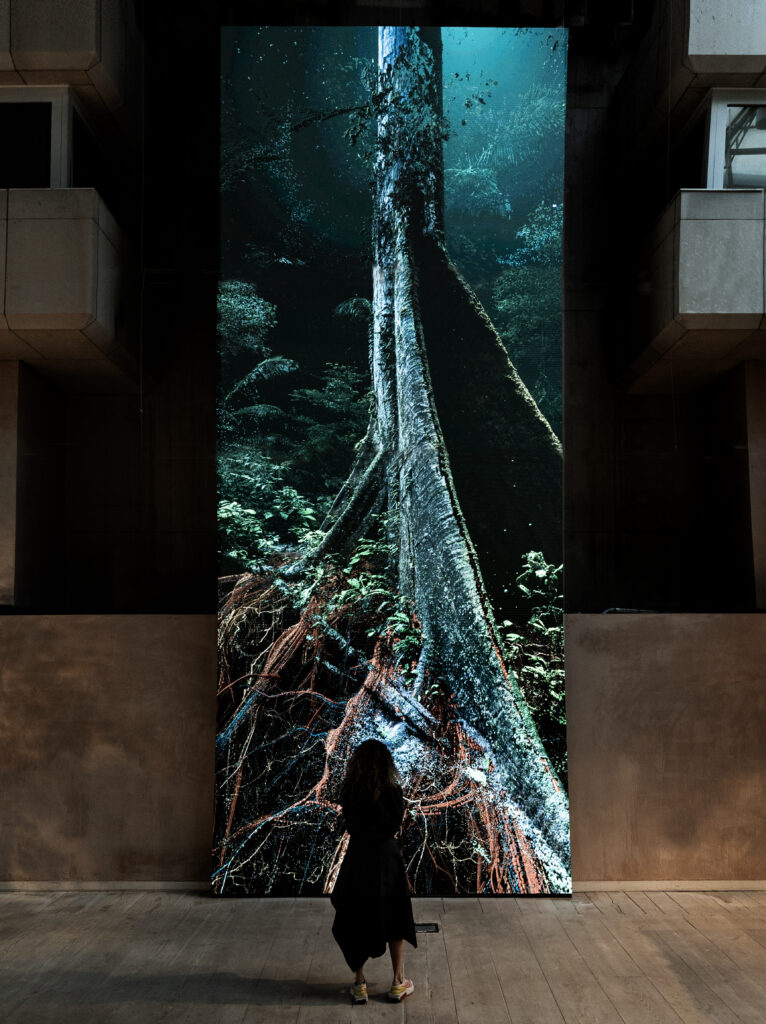
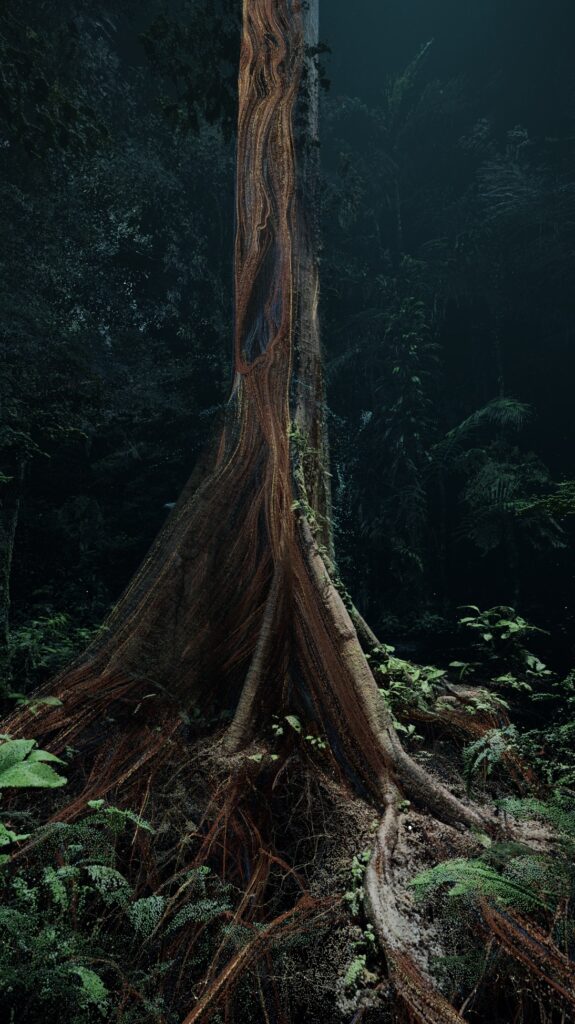
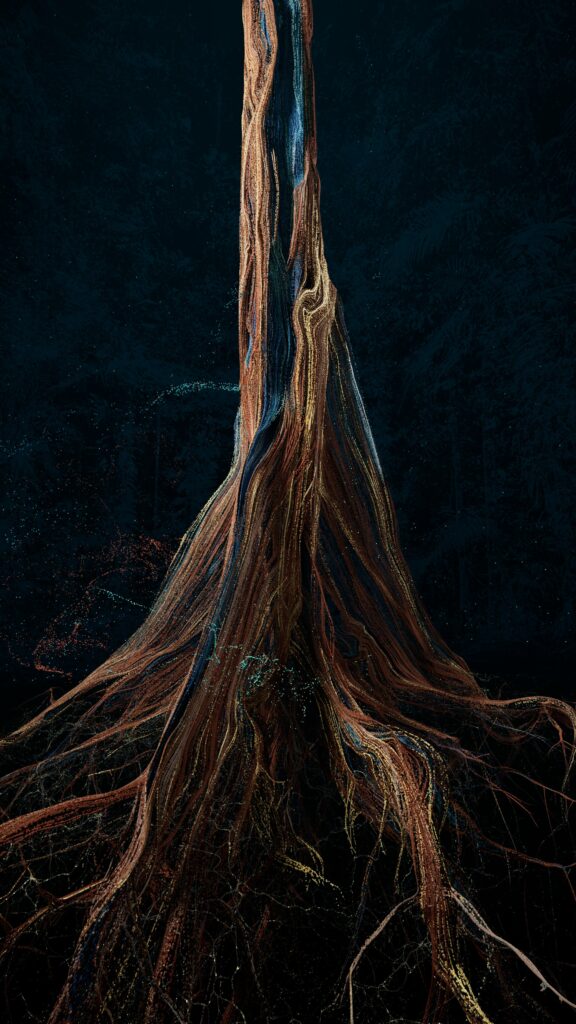
The Ceiba Pentandra and the Amazon Rainforest
The Ceiba Pentandra tree’s volumetric data, field recordings and ecological surveys were conducted by the MLF team in 2020 (4°02’06.8 “S 70°04’44.1 “W). The scanning process is part of our ongoing digital preservation process for endangered ecosystems and the species that inhabit these pristine and fragile biomes.
The Ceiba Pentandra (Kapok) tree is an emergent tree of the tropical rainforests. It can grow to a height of 150 feet or more, towering over other trees in the rainforest.
Emergent trees like the Ceiba Pentandra rise above the canopy of the rainforest and provide a home for plants who are dependent on sunlight. Their branches provide a habitat for countless epiphytes, which provide food and shelter for many types of insects and animals.
Rainforests, like the rest of the natural environment, are part of the planet’s life support system; an invisible world of interconnected systems and cycles that we all depend on, providing fresh air, clean water, fertile soil, nutritious food, rich biodiversity, a stable climate and a natural recycling system. If these systems and cycles are threatened, so are we.
Our collective future depends on us understanding our interconnectedness to the natural world, and for that we need to explore the world beyond our human senses.
Bringing the invisible into view and exploring the interconnectedness of everything can transform our understanding of the world – and how we interact with it.
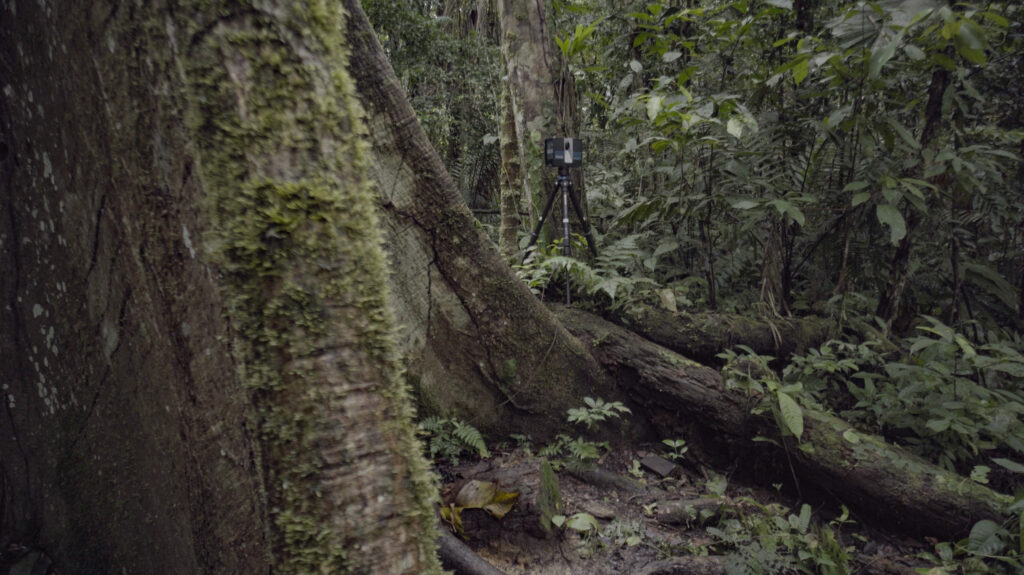
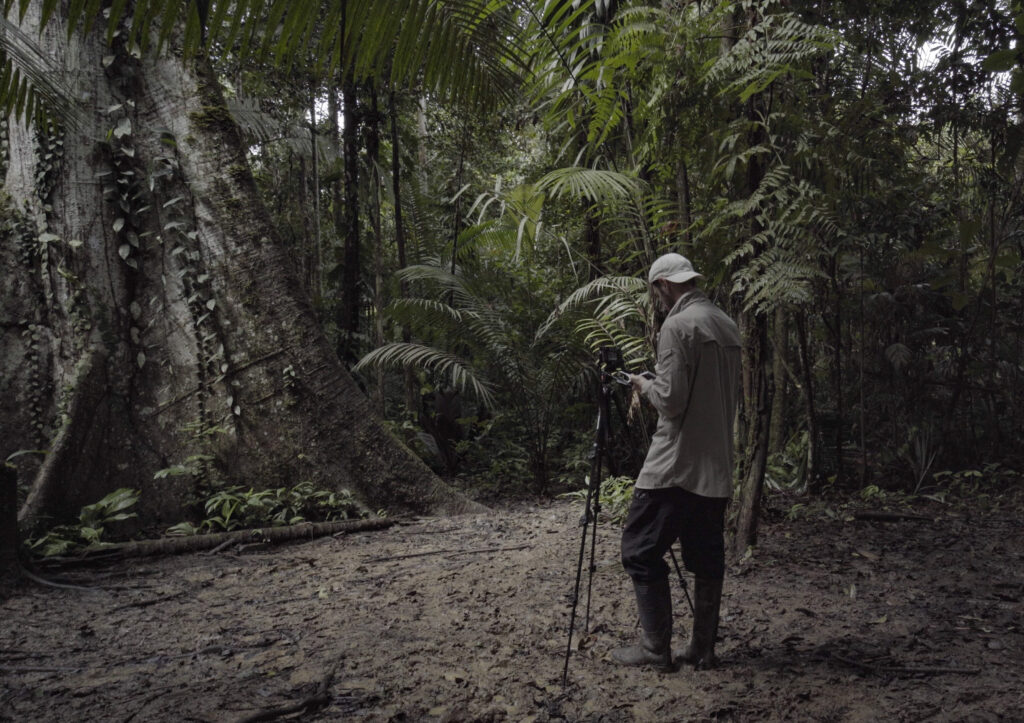

Sanctuary of the Unseen Forest seeks to foster a sense of belonging to a more-than-human world. We are intimately connected with the trees, they can be seen as an extension of our lungs in some ways. The oxygen they exhale flows into our tree-like lungs, flowing from our heart centre outward, through fractal branching arteries to feed every cell in our body.
As we peer through the layers of the tree, we uncover the vibrancy of the life that is flowing through and beyond its body. The flow of nutrients in its phloem pulse to your heartbeat and reverberate through the room. This pulsing draws you in on a journey from crown to the roots, climaxing in rivers of carbon in the soil. Here we meet the woven mycelial bridge between land and the sky: in this network of mycorrhizal fungi we see that no self is bounded – we are all porous, enmeshed and entangled.
In this open way we may seek to live in the world, through a deep and wordless understanding of the roles that we play., The space becomes a sanctuary, a place to reflect and contemplate our place within the wider systems of nature.
Exhibition history
2023/2024 Our Time On Earth at MCQ, Quebec, Canada (14 June – 4 Jan)
2023 Nobel Prize Museum in Stockholm, Sweden (29 Sept – 15 Jan)
2023 Lux: Poetic Resolution at DDP, Seoul, South Korea (4 Sept – 31 Dec)
2023 Outcrop at 180 the Strand, London, United Kingdom (7 July – 30 Sept)
2022 Our Time On Earth at Barbican Curve Gallery, London, United Kingdom (5 May – 29 Aug)